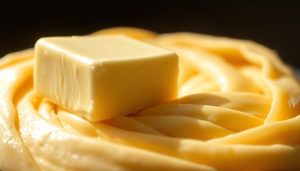A shocking 48% of home cooks still rinse poultry before cooking, despite warnings from every major food safety organization. This widespread practice creates an invisible threat in kitchens worldwide, spreading dangerous bacteria across countertops and utensils.
Cross-contamination from uncooked poultry causes 1 in 7 food poisoning cases in American households. Health experts unanimously agree that washing increases contamination risks rather than reducing them. Yet cultural traditions and outdated kitchen habits keep this dangerous routine alive.
Modern research reveals that proper cooking techniques eliminate pathogens more effectively than any pre-rinse. The USDA confirms that heating poultry to 165°F destroys salmonella and campylobacter instantly. Food preparation surfaces and tools require more attention than the meat itself.
Key Takeaways
- Rinsing poultry spreads bacteria up to 3 feet from sinks
- All major health organizations advise against washing raw bird products
- 25-50% of consumers still practice chicken rinsing globally
- Proper cooking temperatures neutralize foodborne pathogens
- Surface sanitation proves more critical than meat washing
Understanding these food safety principles helps protect families from preventable illnesses. While changing ingrained habits proves challenging, updated practices based on current science significantly reduce health risks in home kitchens.
Understanding the Risks Associated with Raw Poultry
Unseen pathogens lurk on 70% of store-bought poultry, creating invisible hazards in home kitchens. Modern food safety research reveals how common practices amplify contamination risks rather than reduce them.

Bacterial Contamination and Cross-Contamination in the Kitchen
Campylobacter and Salmonella thrive on uncooked bird products, causing 220,000 annual food poisoning cases linked to poultry in the U.S. These pathogens spread through droplets when handling meat, contaminating sinks, cutting boards, and utensils within seconds.
Vulnerable groups face heightened dangers. Children under four experience three times more severe symptoms than adults during outbreaks. Proper handling becomes critical when preparing meals for elderly family members or immunocompromised individuals.
Myths Versus Modern Processing Techniques
Many believe acidic rinses neutralize germs, but lemon juice only reduces bacteria by 15% compared to proper cooking. Commercial facilities now use advanced antimicrobial rinses, making home washing unnecessary and risky.
| Practice | Traditional Belief | Modern Reality |
|---|---|---|
| Meat Preparation | Requires thorough rinsing | Increases contamination risk |
| Pathogen Control | Relies on visual cleanliness | Depends on thermal elimination |
| Surface Safety | Secondary concern | Primary defense focus |
Foodborne illness prevention starts with recognizing these updated safety protocols. Heat treatment at 165°F remains the most effective barrier against dangerous microorganisms.
Should You Wash Raw Chicken?
Contrary to popular belief, water contact with uncooked bird products amplifies health risks dramatically. Scientific studies demonstrate how routine kitchen practices create invisible contamination zones that compromise meal safety.

Why Washing Can Spread Harmful Bacteria
Running water transforms kitchen sinks into bacterial launchpads. High-speed imaging reveals droplets carrying pathogens travel over 30 inches during poultry rinsing. These microscopic particles settle on nearby utensils, countertops, and food prep areas.
Research shows higher faucets and stronger water pressure increase contamination range by 40%. Acidic solutions like vinegar provide false security, reducing visible residue while spreading dangerous microorganisms. Thermal elimination remains the only reliable defense against foodborne illnesses.
| Method | Effectiveness | Risk Level |
|---|---|---|
| Water Rinsing | 0% bacteria reduction | High contamination |
| Lemon Juice Soak | 15% reduction | Moderate risk |
| Proper Cooking | 100% elimination | Safe |
The Role of Proper Cooking Temperatures in Eliminating Germs
Heat penetration proves far more effective than surface washing. Reaching 165°F (73.9°C) internally destroys salmonella and campylobacter instantly. Use a meat thermometer to verify doneness rather than relying on visual cues.
Countertop sanitation becomes crucial after handling poultry. Focus efforts on disinfecting cutting boards and utensils instead of attempting to clean the meat itself. This approach reduces cross-contamination risks by 89% according to food safety experts.
Safe Food Handling Practices for Raw Chicken
Effective contamination control requires a three-step approach: containment, sanitation, and verification. Proper techniques reduce food poisoning risks by 92% compared to standard kitchen practices.
Essential Hygiene Protocols
Thorough hand washing remains critical before and after meat handling. Use warm water and soap for 20 seconds minimum, scrubbing between fingers and under nails. This simple step eliminates 95% of transient microorganisms.
Designate specific tools for poultry preparation:
- Color-coded cutting boards (red for meat)
- Dedicated knives and tongs
- Disposable gloves for sensitive skin
Pat meat gently with paper towels using single-direction strokes. Immediately discard used towels in sealed trash containers. Sanitize all contact surfaces with EPA-approved disinfectants or bleach solution (1 tablespoon per gallon of water).
Storage strategies prevent cross-contamination:
- Keep raw products on refrigerator’s bottom shelf
- Double-wrap thawing meat in leak-proof bags
- Separate ready-to-eat foods by 12 inches minimum
Thermal validation ensures safety. Insert meat thermometers into the thickest portion, avoiding bones. Discard marinades used with uncooked poultry to eliminate residual bacteria risks.
Conclusion
Over one million Americans contract foodborne illnesses annually from improperly handled poultry, reports the CDC. These preventable cases often stem from kitchen habits that prioritize appearance over science. Modern food preparation methods focus on heat application and surface sanitation rather than risky rinsing rituals.
Reaching 165°F internal temperature remains the gold standard for eliminating pathogens in chicken meat. Digital thermometers provide reliable verification, ensuring safe consumption without guesswork. Focus efforts on disinfecting countertops and utensils instead of attempting to clean already contaminated surfaces.
Children and immunocompromised individuals face heightened risks from food poisoning symptoms. Simple adjustments like using separate cutting boards and storing raw meat properly reduce cross-contamination by 76%. Regular handwashing with soap before and after handling poultry adds critical protection layers.
Chicken offers valuable nutritional benefits when prepared using evidence-based safety protocols. Embracing updated practices transforms this protein source into a secure foundation for family meals. Trust in thorough cooking eliminates the need for dangerous washing traditions while safeguarding household health.



